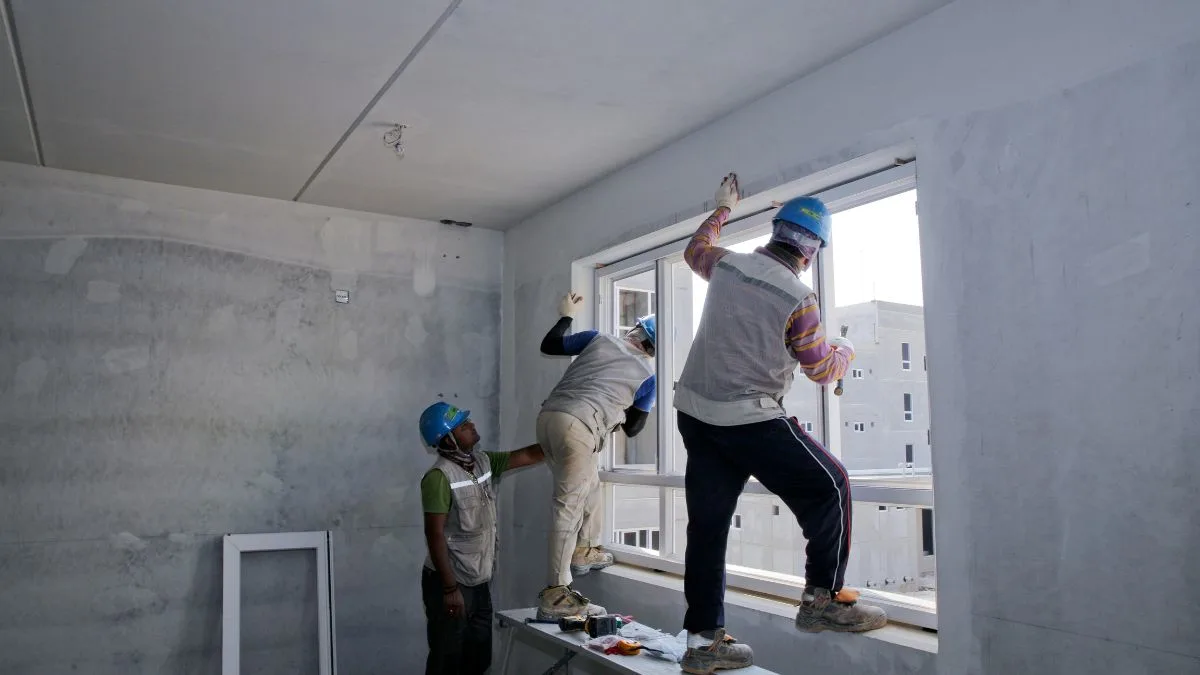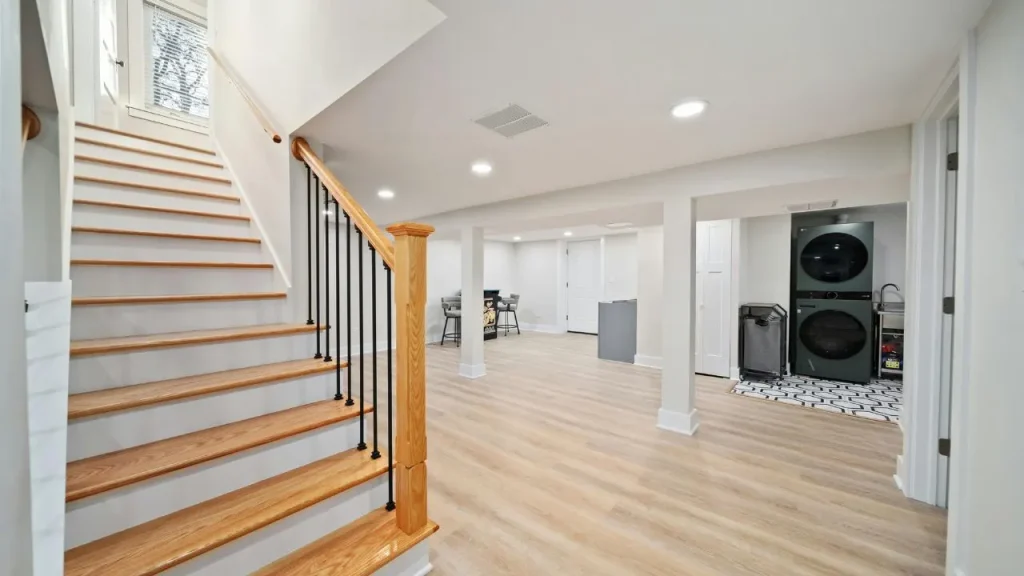
A Complete Guide to Window Replacement for Homeowners
Ever stood near your windows on a cold day and felt that telltale draft? Or noticed condensation forming between glass panes? These signs point to one inevitable conclusion: it’s time for window replacement. But here’s the thing – replacing windows isn’t just about fixing problems. It’s about transforming your entire living experience.
When Windows Send You Warning Signals
Your windows communicate their condition in various ways. Difficulty opening or closing them suggests frame warping or hardware deterioration. Visible damage like cracked glass, rotting frames, or failed seals between double-pane glass demands immediate attention.
Energy bills provide another telling indicator. If your heating and cooling costs keep climbing despite consistent usage patterns, inefficient windows might be the culprit. Single-pane windows, in particular, offer minimal insulation compared to modern alternatives.
Noise infiltration also signals window inadequacy. Quality replacement windows dramatically reduce outside noise, creating a more peaceful indoor environment.
Planning Your Window Replacement Strategy
Start by evaluating each window individually. Not every window necessarily needs immediate replacement. Focus on the worst performers first, then develop a timeline for addressing remaining units.
Whole-house replacement offers the advantage of consistent appearance and potentially better pricing through volume discounts. However, phased replacement allows you to spread costs over time and learn from initial installations.
Consider seasonal timing carefully. Spring and fall typically offer ideal weather conditions for installation, while winter projects may face weather-related delays.
As interior designer Joanna Gaines wisely observed, “Good design is all about making life better, easier, and more beautiful, and a great home design does all of these things.” Your window replacement project embodies this philosophy by enhancing comfort, efficiency, and aesthetics simultaneously.
Modern window technology has revolutionized energy performance. Energy Star-certified windows can save homeowners $101-$583 annually in energy costs when replacing single-pane windows. These savings accumulate significantly over the window’s lifespan.
Understanding Energy Ratings
- U-factor measures insulation effectiveness (lower numbers = better performance)
- Solar Heat Gain Coefficient controls solar radiation transmission
- Air leakage ratings indicate how well windows prevent drafts
Triple-pane windows represent the cutting edge of efficiency technology. They’re approximately 50% more thermally efficient than double-pane alternatives, though they come with higher upfront costs. Industry forecasts suggest triple glazing will account for over 20% of the US residential market by 2030, up from just 3% currently.
Exploring Frame Materials and Their Characteristics
Each frame material brings distinct advantages and considerations:
Vinyl Frames
Vinyl dominates the residential market, capturing 56% of demand in recent surveys. These frames resist moisture, don’t require painting, and provide excellent insulation properties. They’re particularly suitable for coastal environments where salt air challenges other materials.
Fiberglass Frames
Though more expensive, fiberglass frames excel in extreme climates. They expand and contract minimally with temperature changes, maintaining seal integrity longer than other materials.
Wood Frames
Traditional wood frames offer unmatched customization potential and aesthetic appeal. However, they require regular maintenance and typically cost significantly more than alternatives.
Composite Frames
These engineered materials combine wood’s appearance with enhanced durability, offering a middle ground between aesthetics and maintenance requirements.
Glass Technology That Makes the Difference
Modern glazing incorporates multiple performance-enhancing features:
Low-E coatings reflect heat while allowing visible light transmission. Different coating formulations optimize performance for specific climate zones. In northern regions, coatings emphasize heat retention, while southern climates benefit from solar control properties.
Gas fills between panes improve insulation dramatically. Argon gas, the most common option, costs less than krypton but offers slightly lower performance. Krypton provides superior insulation but increases window costs.
Spacer systems separate glass panes while minimizing thermal bridging. Warm-edge spacers reduce condensation and improve overall window performance compared to traditional aluminum spacers.
Financial Considerations and Incentive Programs
Window replacement represents a substantial investment, but multiple factors improve the financial equation. Energy-efficient windows cost between $150 and $4,000 on average before installation, with whole-house projects ranging from $6,685 to $33,425.
Federal tax credits significantly offset replacement costs. For qualifying windows installed through 2032, homeowners can claim 30% of project costs up to $600 annually. This credit applies to both materials and professional installation.
Many utility companies offer additional rebates. Some programs provide $75 per window when upgrading from single-pane to ENERGY STAR “Most Efficient” certified models.
State and local incentive programs vary by region. Research available programs before finalizing your project timeline – some rebates require pre-approval or specific certification processes.
Choosing the Right Installation Professional
Professional installation determines whether your new windows achieve their performance potential. Even premium windows fail to deliver expected results without proper installation techniques.
Look for installers with manufacturer certifications. Major window brands maintain training programs that ensure installers understand their products’ specific requirements. Certified installers typically offer better warranty support and fewer post-installation issues.
Questions for Potential Installers:
- Do you carry manufacturer certifications for the windows I’m considering?
- Can you provide local references from recent projects?
- How do you handle unexpected issues like frame damage or non-standard openings?
- What warranty do you provide on installation workmanship?
Get detailed written estimates that separate material and labor costs. This breakdown helps you compare proposals objectively and understand where your money goes.
For comprehensive window solutions, click here to explore professional options that prioritize both quality installation and long-term performance.
Installation Timeline and Process Expectations
Typical window replacement takes 30-60 minutes per window, depending on complexity. Whole-house projects usually span several days, allowing installers to maintain quality while minimizing disruption.
Prepare your home by removing window treatments and clearing access paths. Move valuable items away from work areas to prevent damage from dust or debris.
Weather contingencies may affect scheduling. Professional installers monitor forecasts carefully and may reschedule installations to avoid rain or extreme temperatures that could compromise sealing materials.
Maximizing Long-term Performance
As renowned architect Le Corbusier noted, “The home should be the treasure chest of living.” Your window investment protects this treasure through enhanced comfort, security, and efficiency.
Proper maintenance extends window lifespan significantly. Clean glass and frames regularly, lubricate moving parts annually, and inspect weatherstripping for wear. Quality windows can perform effectively for 20-25 years with appropriate care.
Monitor energy bills after installation to quantify your savings. Many homeowners are pleasantly surprised by the immediate comfort improvements and gradual utility cost reductions.
Making Your Investment Count
Window replacement ranks among the most impactful home improvements you can undertake. Beyond energy savings, new windows enhance security, reduce noise, and improve indoor air quality by eliminating drafts and moisture infiltration.
Choose products from established manufacturers with proven track records. Quality windows backed by comprehensive warranties provide peace of mind and long-term value.
Remember that this investment influences your daily comfort for decades. Take time to research thoroughly, ask detailed questions, and select solutions that align with your specific needs and budget. The result will be a more comfortable, efficient, and enjoyable living environment that serves your family well into the future.
For newcomers settling into a new country, upgrading windows isn’t just about aesthetics – it can also improve energy efficiency and reduce utility costs, which is especially valuable when adapting to a new home in a different climate. Knowing how to prioritize home improvements can make your transition smoother and your living space more comfortable. If you’re also preparing for essential settlement steps like language testing, check out our guide on where CELPIP is accepted and who accepts it to plan ahead.











